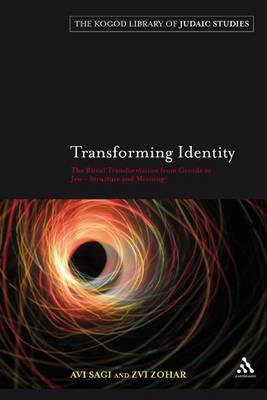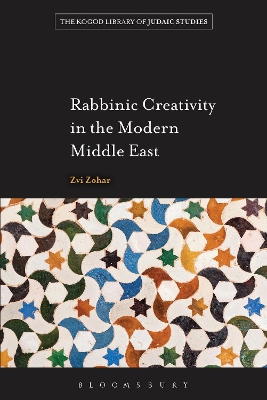The Robert and Arlene Kogod Library of Judaic Studies
1 primary work • 2 total works
Book 3
Of all Judaic rituals, that of giyyur is arguably the most radical: it turns a Gentile into a Jew - once and for all and irrevocably. The very possibility of such a transformation is anomalous, according to Jewish tradition, which regards Jewishness as an ascriptive status entered through birth to a Jewish mother.
What is the internal logic of the ritual of giyyur, that seems to enable a Gentile to acquire an 'ascribed' identity? It is to this question, and others deriving from it, that the authors address themselves.
Interpretation of a ritual such as giyyur is linked to broad issues of anthropology, religion and culture: the relation of 'nature' and 'culture' in the construction of group boundaries; the tension between ethnicity and religion; the interrelation of individual identity and membership in a collective. Fully aware of these issues, this groundbreaking study focuses upon a close reading of primary halakhic texts from Talmudic times down to the present as key to the explication of meaning within the Judaic tradition.
In our times, the meaning of Jewish identity is a core issue, directly affecting the public debate regarding the relative weight of religion, nationality and kinship in determining basic aspects of Jewish life throughout the world. This book constitutes a seminal contribution to this ongoing discussion: it enables access to a wealth of halakhic sources previously accessible only to rabbinic scholars, fleshes out their meanings and implications within the cultural history of halakha, and in doing so situates halakha at the nexus of contemporary cultural discourse.
What is the internal logic of the ritual of giyyur, that seems to enable a Gentile to acquire an 'ascribed' identity? It is to this question, and others deriving from it, that the authors address themselves.
Interpretation of a ritual such as giyyur is linked to broad issues of anthropology, religion and culture: the relation of 'nature' and 'culture' in the construction of group boundaries; the tension between ethnicity and religion; the interrelation of individual identity and membership in a collective. Fully aware of these issues, this groundbreaking study focuses upon a close reading of primary halakhic texts from Talmudic times down to the present as key to the explication of meaning within the Judaic tradition.
In our times, the meaning of Jewish identity is a core issue, directly affecting the public debate regarding the relative weight of religion, nationality and kinship in determining basic aspects of Jewish life throughout the world. This book constitutes a seminal contribution to this ongoing discussion: it enables access to a wealth of halakhic sources previously accessible only to rabbinic scholars, fleshes out their meanings and implications within the cultural history of halakha, and in doing so situates halakha at the nexus of contemporary cultural discourse.
Rabbinic Creativity in the Modern Middle East provides a window for readers of English around the world into hitherto almost inaccessible halakhic and ideational writings expressing major aspects of the cultural intellectual creativity of Sephardic-Oriental rabbis in modern times. The text has three sections: Iraq, Syria, and Egypt, and each section discusses a range of original sources that reflect and represent the creativity of major rabbinic figures in these countries. The contents of the writings of these Sephardic rabbis challenge many commonly held views regarding Judaism's responses to modern challenges. By bringing an additional, non-Western voice into the intellectual arena, this book enriches the field of contemporary discussions regarding the present and future of Judaism. In addition, it focuses attention on the fact that not only was Judaism a Middle Eastern phenomenon for most of its existence but that also in recent centuries important and interesting aspects of Judaism developed in the Middle East. Both Jews and non-Jews will be enriched and challenged by this non-Eurocentric view of modern Judaic creativity.

